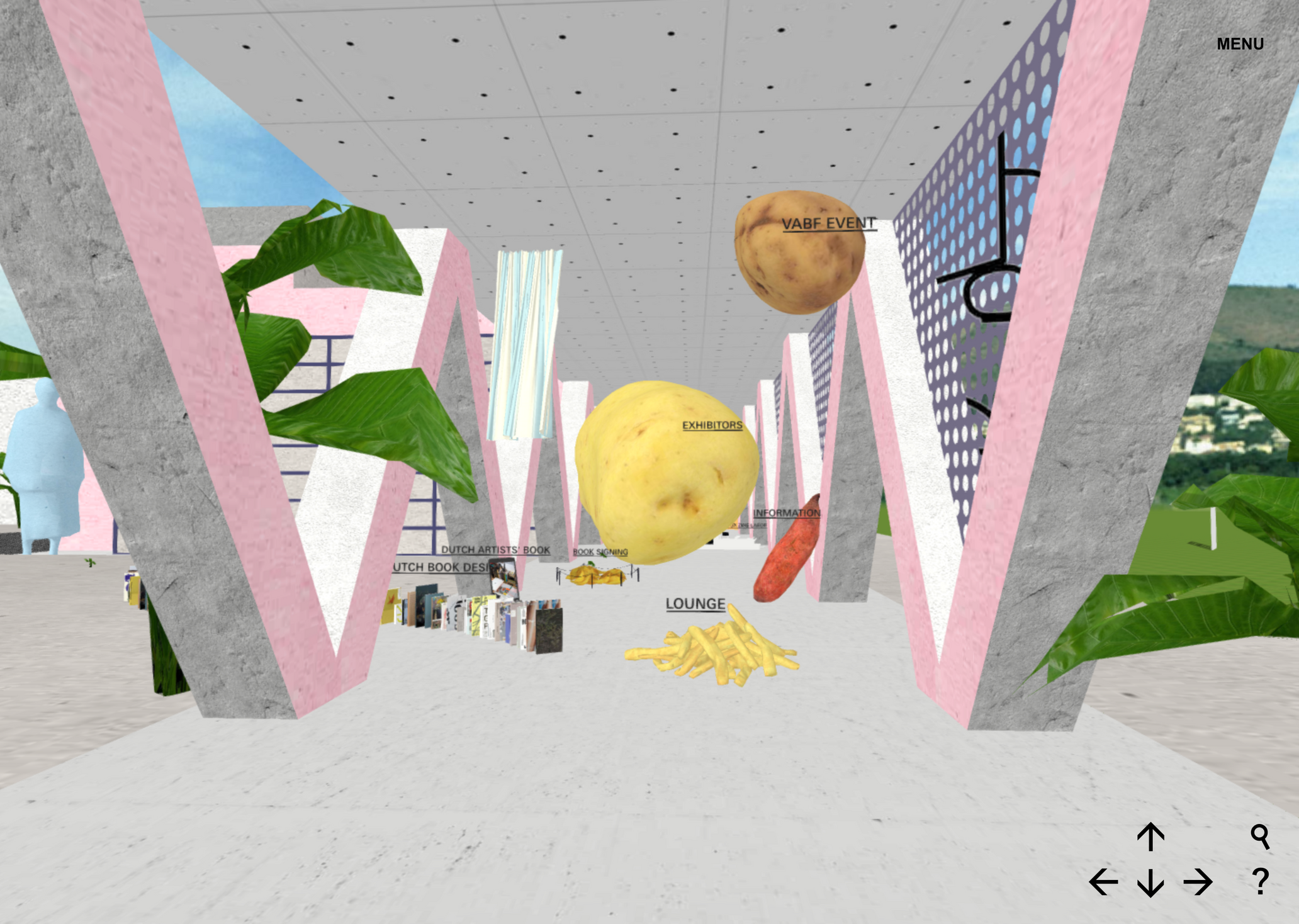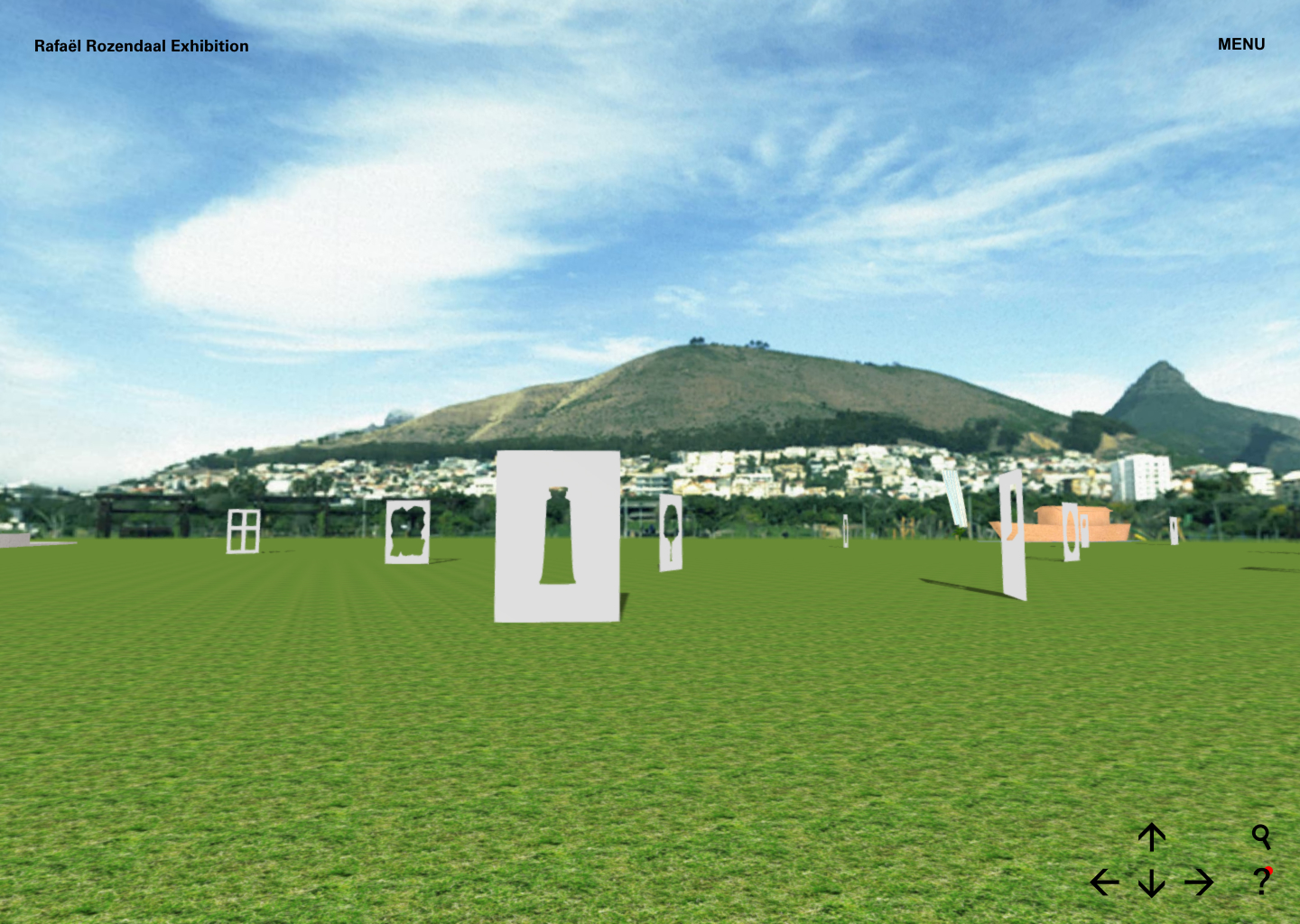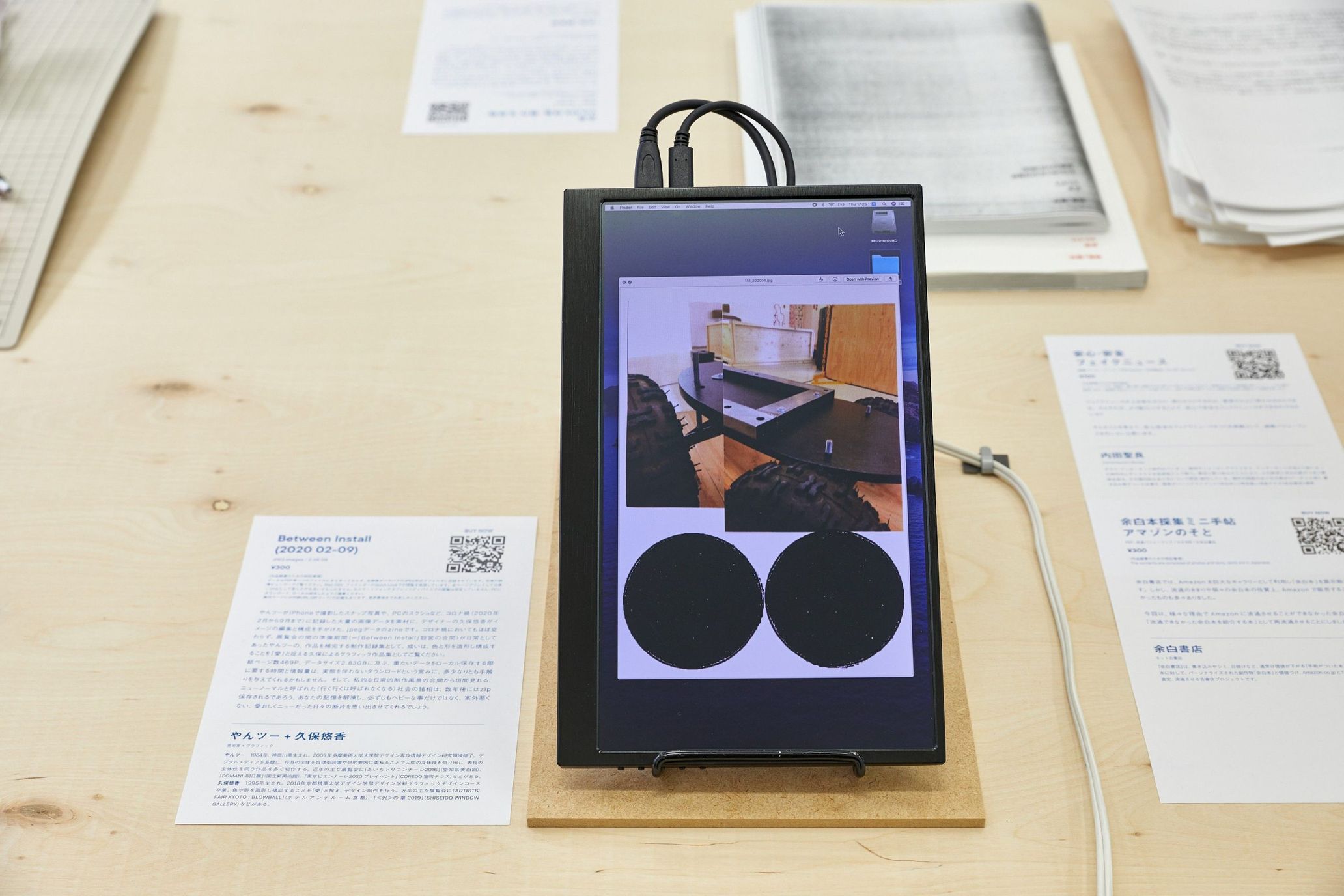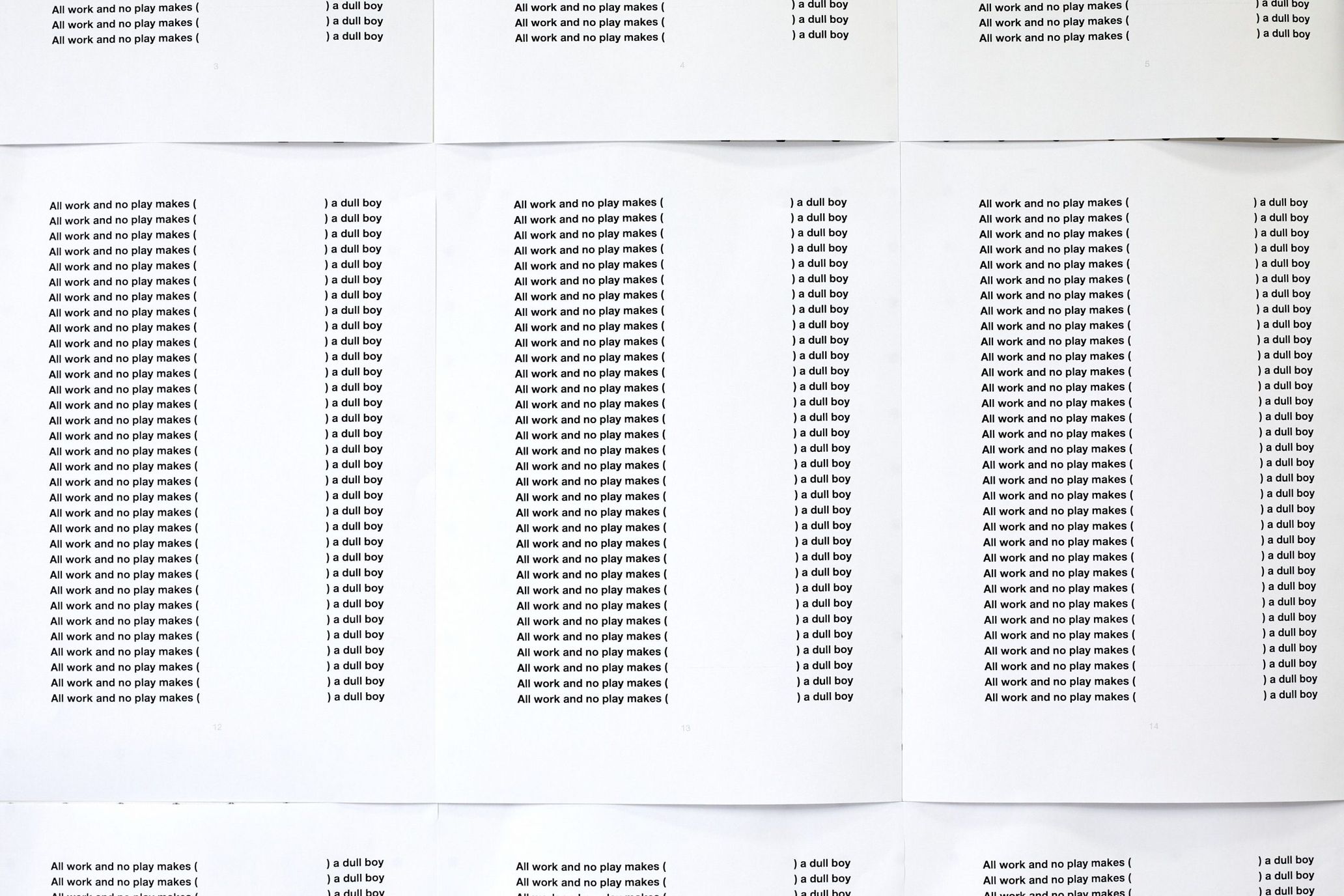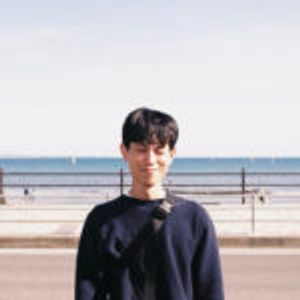From business to science, the number of situations where people advocate for the necessity of art is dramatically increasing. Although the world doesn’t look different under the influence of the corona pandemic, people’s minds are changing; under such change, how does everyone’s perception of art transform? Gallerists, artists, and collectors are now researching and trying to predict what kind of art will appear in the post-corona generation.
Shunya Hagiwara, who was in charge of the web direction of the art book fair “VIRTUAL ART BOOK FAIR (VABF)” held in virtual space last November, is appearing in the 4th edition. Last year, the organizers of “TOKYO ART BOOK FAIR (TABF)”, an art book festival which has been held once a year since 2009, shelved its holding at the Museum of Contemporary Art Tokyo in order to prevent the spread of the novel coronavirus infection (COVID-19). Instead, the event was held in virtual space as a new attempt.
What did Hagiwara keep in mind and how did he create the website for this “VABF” in which approximately 230 groups of art shops and labels such as “POST”, “Utrecht” and “twelvebooks” participated? Also, from his extensive experience in web direction, what possibilities does he see in digital media which will surely be one of the essential expressions of the post-corona era?
How can we encourage visitors to dig through “VABF”?
–First of all, I would like to ask you about the design of “VABF” held last year. It seems that the venue of “TABF” was reproduced digitally. Please tell us what you gave attention to in the process of UX design.
Shunya Hagiwara: For “VABF”, I collaborated with many people involved, and I was in charge of overall management as a web director. The idea of holding a book fair in 3D space was a suggestion from “TABF” members. Rather, as an expert who has been working on web design, I knew how difficult it was to deal with web 3D (laughs). Although I’m a professional in terms of how to design accessible user flows, creating a 3D website seemed to belong to the field of spatial design. So I was introduced by designer Yoshihisa Tanaka to architects Mr. Sunayama (Taichi) and Mr. Kiuchi (Toshikatsu) who both had participated in the Venice Biennale of Architecture and they joined the team.
Information expression by way of 3D inevitably falls close to the “online gaming” sphere. It is widely known that American rapper Travis Scott and Japanese singer-songwriter Kenshi Yonezu put on a virtual live concert inside the game Fortnite. I felt it would be unwise for us to compete on quality as a game because quite a lot of people have started and got used to such games during the coronavirus pandemic. Therefore, one thing I always kept in mind was that “VABF is not a game”. Besides, since even gravity must be programmed in digital space, we had a series of discussions within a limited time, on topics such as “Do we need to have gravity in the first place?” and “Does the venue need to be a building?” and thought about exactly what we need to create from scratch.
Also, I think the important thing at the book fair is “the joy of discovering by chance.” I myself was personally interested in the act of “digging though” too, so I really thought about how we could let the visitors dig through this venue. Today, people don’t actively do it very often because information reaches users on its own, and it’s just too easy to close mobile web pages.
――Google Chorme was recommended as the browser for this VABF. Was it intentional?
Hagiwara: That’s a good point (laughs). Basically, graphic designers first decide the paper size before working on the design work, but web designers cannot work in the same way because even after completing the design phase, the size and specifications of the web pages are decided the moment it is viewed. That can be an interesting point about web design too, but if creating 3D Web Pages in such an environment, designers have to put considerable effort into program optimization. What’s more, the smartphone will easily power down if it is operated in overload. Anticipating that many users would browse it on smartphones this time, we were very worrying whether it would work properly until the very last minute. AMAGI, the engineer responsible for 3D design, devised a lot of solutions and finally made it possible to be browsed in most browsing environments. However, it’s still desirable to specify user’s browsers and system requirements to some extent.
――What were the benefits of making “TABF” a digital platform?
Hagiwara: First and foremost, it’s a big thing that visitors didn’t have to go out and visit the venue. At the time when we decided to hold the event, there were increasing demands for contents that could be enjoyed at home due to a prevailing sense of fear for the second wave of corona pandemic. So I received quite a lot of positive comments on how good it is to go out virtually. Also, this time there was a project featuring the Dutch art book scene and I got told that a friend in the Netherlands had visited the website, which I am sure was only possible with the virtual book fair.
――On the other hand, what has been lost by making it virtual?
Hagiwara: There were a lot of things that can’t be reproduced virtually, such as the energy and enthusiasm of people gathering together under one roof, accidental meetings with acquaintances on the way to the museum in Kiyosumi-Shirakawa, the weight of the purchased books in the visitor’s bag, and what the vendors actually look like. Since there is basically nothing but something uploaded by someone on the web, wrong things and strange things don’t pop up. The event acutely reminded me of how important such things are.
The challenge for digital is “errors” that do not feel staged.
――As a pebble on the road draws passerby’s attention, an error, or information obtained accidentally stands out more in a real world, doesn’t it?
Hagiwara: You’re totally right. For this venue, we consciously created the structure with marginal space through which each vendors presence is signaled, allowing each of them to lay their books out freely within the allocated space, but there is a limit to the design. “Pebble” is content that exists on a platform called “roadside” and cannot exist unless there is a space such as a road or a city. Just as “tweets” as contents wouldn’t exist without Twitter, pebbles can only exist in reality.
Japanese sociologist Masahiko Kishi writes about pebbles at the beginning of the book “Sociology of Fragmentary Things”. It says when picking up one of the innumerable pebbles on the street, it became “the pebble” for the author at “that moment” and he was deeply moved by the chance of encountering it in this wide world at “the moment”. Looking at this story from the perspective of web terminology, I think it can be rephrased as ‘a state of “engagement.”’ In the web industry, the term ‘engagement’ is often used to refer to “likes” or “clicks” on a link. It’s a state where the content and the user are connected. Certainly, there are fateful “engagements” on the web: random photos uploaded by someone can become a favoriteof someone else and make this person cannot help looking at it again and again. And I wonder how you can design this kind of great impressions. Or it might be totally arrogant to even think about it.
Also, as for pebbles, you can take them home. But I was just wondering yesterday, when you capture your favorite photo on the web and save it as a jpeg, or print it out and put it on the wall of your room, if I could say that that photo and the user are engaged (laughs).
――If you had the same exhibition in both real space and virtual space, would they really be the same?
Hagiwara: I recently bought the VR goggles “Oculus Quest 2”, and when everything in front of me becomes a virtual space, it feels quite real. Even if you play table tennis virtually, it feels like a real experience. It’s just frustrating to do this with the mouse and cursor. However, for example, I think VR has a limited capacity for “appreciation of paintings drawn with paints” because you can’t see the actual texture of the work or the object itself. On the other hand, if the work is an installation or performance, I think the work in virtual space can function properly too. The VR theater “Prometheus Bound ” by Japanese artist Meiro Koizumi is apparently something that is a very unique of using VR. I’m sure artists from many different fields will have exhibitions using VR and virtual space, and the difference between “work of art” and “environment” will become increasingly ambiguous and the ground on which the notion of ‘exhibition’ stands will be questioned, because even gravity has to be programmed in advance in such virtual spaces.
――In a real exhibition, the way the light enters into the gallery changes depending on the time, which affects the way the work looks.
Hagiwara: Certainly, the way you feel the work differs depending on the time of day in a gallery subject to the influence of natural daylight. If you try to replicate this in a virtual space, you have to write all the programs including the light intensity. But it inevitably feels “staged”. In a sense, the fact that everything seems intentional in a virtual space remains an issue for digital.
The new countermovement is balancing between art and economy, like selling digital works on NFT
――There was a person who digitally reproduced “Luis Barragán’s house” before, but it was definitely different from the real thing.
Hagiwara: The digital reproduction of work of James Turrell doesn’t seem to be interesting either. Or rather, it would be fun if Turrell himself came to term with this artificiality and made a work that takes advantage of it (laughs). However, it seems that some kind of “value” of works in real space will be lost. At this edition of “VABF”, Rafael Rosendaal exhibited a large-scale sculpture in a virtual park and also said, “I want to do this in a real park in the future.” It made me think of what can only be realized with virtual reality, as well as some kind of “value” that real things bear.
――After hearing such stories, I get the impression that both the performers and the viewers are seeking freedom and are doing something new as alternatives either digital or in real space. Do you think the movement to explore alternative places in art will continue to be active?
Hagiwara: There are many things that can only be done in real life, so the existing system will not easily collapse. I think we are still having online drinking parties “reluctantly” now, but if the feeling that “online drinking is more fun” spreads, alternative movements will become more active. Recently, I’ve been playing games with my friends on a game platform called “Among Us” and drinking, which is fun on its own. In this way, I think that alternative places will become more active, but I don’t think everything will be replaced by digital, as can be seen from the fact that all the paper books haven’t disappeared even after the advent of Kindle, the ratio may change though.
――In terms of digital and real, you and your team held the exhibition “TRANS BOOKS DOWNLOADs”, which deals only with books that can be “downloaded” from the web, at “same gallery” in Musashi-Koyama last December.
Hagiwara: The purpose of “TRANS BOOKS” is to explore the future of media under the theme of books, considering books as a media that goes beyond digital and analog and as a platform that provides an opportunity to think about expressions. There are various forms of “books” such as e-books and audio books, and even if the contents are the same, there are many different forms and ways of showing them. Therefore, I have been thinking about what kind of experience can be called a book in VR, whether just a collection of tweets can be a book and how far what we call “book” can be.
Meanwhile, the Corona pandemic has brought various people to the Internet. It was a flow of “uploading” that somehow tries to put what was done in the real world online. As with the drinking party I mentioned earlier, I thought that the act of uploading might have impaired the important part of the original. Then, in order to find out what had been spilled out, I planned a project to propose a “book” to experience data by downloading it to user’s hand or smartphone under the theme of “downloading” which is antithetical to uploading.
Looking at the data-converted “book”, I noticed that I couldn’t browse it in the way that we do in a bookstore. Even if you try to read a little, it is no longer a browsing in the traditional sense if you duplicate the data because there is no longer difference between duplicated one the real one. I realised a browsing was only possible with a paper book that could not be easily duplicated. With this awareness in mind, we had an exhibition at “same gallery” and use this place as a venue where visitors could browse the data. In this exhibition, I created a system in which visitors can browse the works created on the theme of “what is downloading” by participating artists at the venue, and if they liked it, they can purchase the data of it.
Photography Yusuke Tsuchida
――It seems that it will take some time before we can hold art fairs and physical events. Finally, amid the advance in the digitalization, which is observed as a matter of course, is there any new countermovement that you are interested in or anything you would like to try?
Hagiwara: This is not a prospect, but NFT (Non Fungible Token) is on the rise now, isn’t it? This is a kind of technology that proves the owner of a certain digital data. For example, the world’s first tweet was sold for hundreds of millions of yen on NFT, and some galleries have started to sell artworks on NFT. It looks like a kind of bubble now. I personally don’t expect much of it, but I feel that this trend will get more active once it becomes compatible with the economy.
Personally speaking, as can be seen in the issues on political correctness, I feel that the recent social media have reached its limits. They are basically media that are made up of the user’s emotions leaking out. There are many good things about them, such as making transmission and dissemination of information open to everyone. But there is jealousy and impatience at the root of them. That’s why I want to create a medium in which users need not express their emotions. I would like to try to design an experience of or a product for the quiet enjoyment of information.
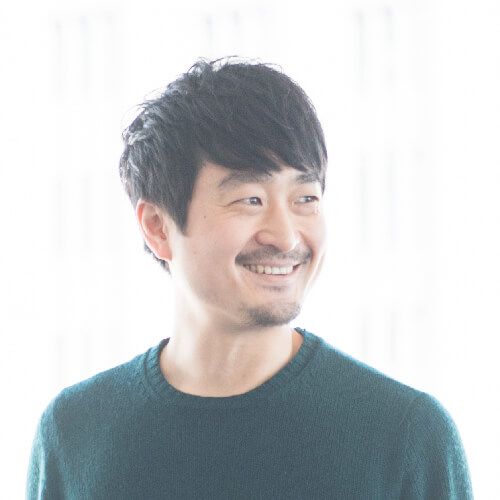
Shunya Hagiwara
Born in 1984. Web designer. He became independent from design collective Semitransparent Design in 2012. He focuses on web design and internet art. In 2020, he was in charge of the web direction of “VABF” and the internet venue of “Exonimo UN-DEAD-LINK Exhibition” held at the Tokyo Photographic Art Museum, as well as websites of many clients such as “twelvebooks” and “skwat”. He is a winner of the Japan Media Arts Festival New Face Award and the Tokyo TDC RGB Award.
Edit Jun Ashizawa(TOKION)

